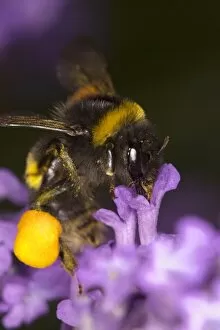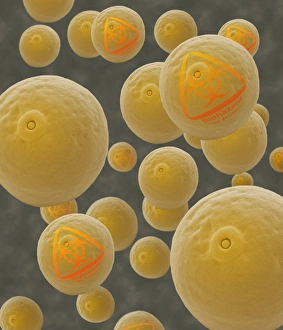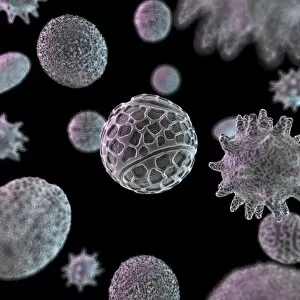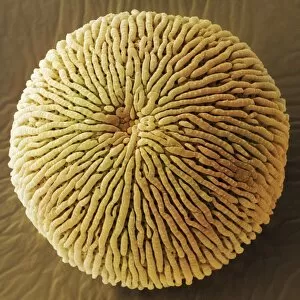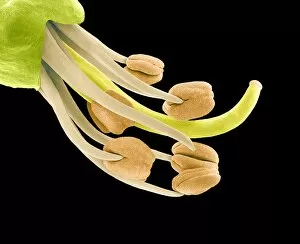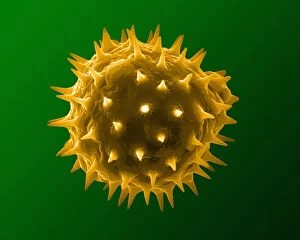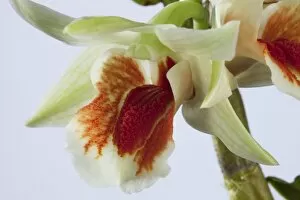Pollen Collection (page 16)
"Pollen: The Lifeblood of Nature's Symphony" In the intricate dance of nature, pollen plays a vital role as the lifeblood that sustains countless species
All Professionally Made to Order for Quick Shipping
"Pollen: The Lifeblood of Nature's Symphony" In the intricate dance of nature, pollen plays a vital role as the lifeblood that sustains countless species. Honey bees (Apis mellifera) diligently collect this golden treasure from vibrant blossoms, creating a mesmerizing tapestry within their honeycomb and perpetuating their remarkable life cycle. Take a closer look at this enchanting world through an expanded cross-section and insets, revealing the intricate beauty of lavender pollen grains under scanning electron microscopy (SEM). As spring arrives, bees buzz with excitement amidst blooming landscapes, like delicate bullfinches perched on blossoms in search of nourishment. Pollen grains come in diverse shapes and sizes - each unique to its plant origin. From dahlia flowers to various plants' microscopic wonders captured by SEM, these tiny particles hold immense significance for both flora and fauna alike. Witness the harmonious synergy between honeybees and cherry tree blossoms as they unite in Baden-Wuerttemberg, Germany. In another captivating scene, a 7-spot ladybird gracefully rests upon marsh marigolds while surrounded by vibrant pollen-laden petals. Traveling across regions brings us to Norfolk UK where opium poppy flowers sway gently in the breeze - their alluring blooms adorned with precious pollen waiting to be dispersed into the world. Meanwhile, forget-me-not flowers reveal their hidden intricacies when observed under SEM. Finally, picture a bumblebee delicately collecting nectar from lavender blossoms against Vienna's picturesque backdrop. This industrious creature not only gathers sweet nectar but also inadvertently carries essential pollen from flower to flower - ensuring future generations flourish. Indeed, "pollen" is far more than just an ordinary substance; it represents nature's symphony orchestrated by buzzing wings and fragrant blooms. It symbolizes resilience and interconnectedness as it weaves together ecosystems worldwide – reminding us that even something so small can have a profound impact on the tapestry of life.


